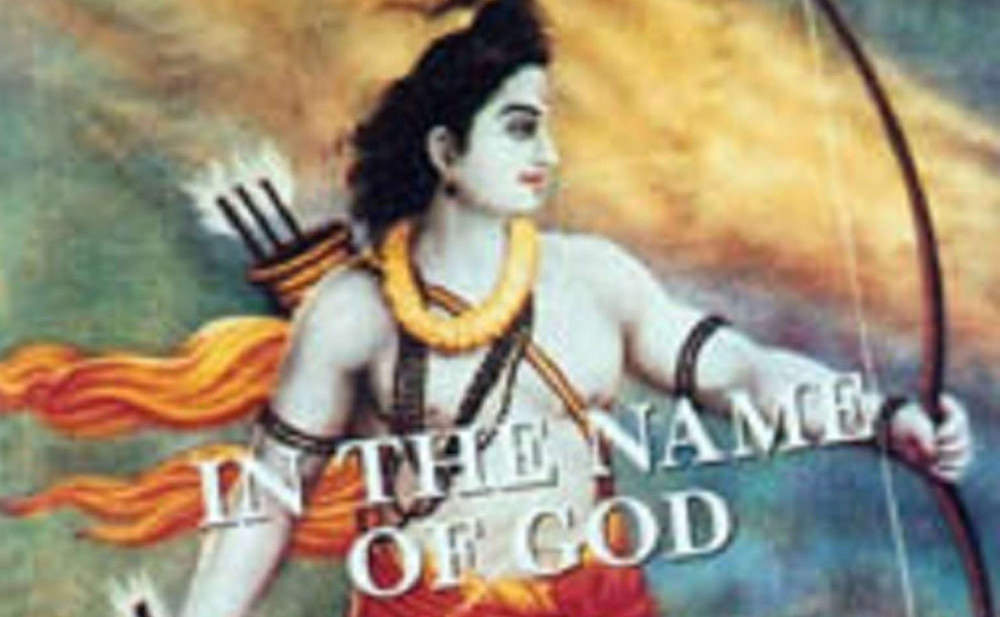Ram Ke Naam


India
Ram ke naam (“In the name of god”) is a 1992 documentary directed by Anand Patwardhan that considers the rise of Hindu nationalism, or “Hindutva”, and the demolition of the Babri Masjid (Mosuqe of Babur) in Ayodhya, India. Patwardhan was already well known for his documentaries Prisoners of conscience (1978), which focused on the political prisoners of the Emergency period, and Bombay: Our city (1985), which represented the everyday lives of slum dwellers in Bombay (Mumbai from 1995) (Lal 2005; Singh and Bhargava 2002). However, the controversy surrounding the release of Ram ke naam, its censorship, and the ongoing significance of the politics that it represents extended Patwardhan’s notoriety.
Ram ke naam documents the campaign of the Vishva Hindu Parishad (VHP), a Hindu nationalist organisation, to construct a Ram temple on the site of the Babri Masjid in Ayodhya. The Babri Masjid was built in 1528-29 during the Mughal invasion. While the film depicts that it is impossible to know where in Ayodhya Ram was born, the VHP claims that the Hindu warrior god was born on this site, and that a Ram temple was demolished in this construction process. The Ayodha site was shared by Muslim and Hindu worshippers until after Indian independence, when during the night of 22 December 1949 idols of Ram appeared in Babri Masjid. This appearance is represented on widely distributed VHS as a miraculous one, however Patwardhan’s film interviews one of a group of priests who claim responsibility for placing the idols in the mosque, at the directive of the district magistrate K.K. Nayar, later a prominent member of the Hindu nationalist Bharatiya Jana Sangh (BJS) Party. The gates to the site are locked, and in a 1986 attempt to appease Hindu constituents the government allows Hindu but not Muslim worshippers to visit the site. At the same time, the far-right VHP campaigned to construct a Ram temple on the site and dismantle the mosque. This “saffron politics” was supported by the Bharatiya Janata Party (BJP), with its leader L.K. Advani conducting a “rath yatra” (chariot journey, or in his case a Toyota) over a distance of 10,000 kilometres from Somnath to Adoyhya. Patwardhan’s film examines the political context preceding and during the rath yatra, including Advani’s controversial visit to and arrest in the state of Bihar, where the rath yatra is protested as exemplary of the political class’s exploitation of religious difference for political and financial gain.
Patwardhan interviews a diverse public about the rath yatra, including Hindu nationalists advocating violence, a government tax officer sacked after investigating the financial records of the VHP, and lower caste Hindus critical of upper caste priests and politicians promoting a temple that they themselves would be prohibited from entering, in a context where commodity prices and imminent eviction are more pressing concerns. In December 1992, shortly after the release of Ram ke naam, VHP activists destroyed the Babri Masjid. This instigated further communal violence to that which had occurred since 1986, and which had followed in the wake of the rath yatra, resulting in over 5,000 deaths.
Ram ke naam, along with other films by Patwardhan, provide notable instances of Indian films subject to censorship outside the usual channel of the CBFC. While the initial CBFC examining committee asked for cuts on the grounds of “law and order”, a revising committee passed Ram ke naam with a “U” certificate without cuts. Doordarshan, India’s national television broadcaster, is obliged to show films that have won national awards. However, despite winning the national award for the Best Investigative Documentary in 1992, Ram ke naam was not programmed by Doordarshan until Justice A.P. Shah of the Bombay High Court ordered it to do so in 1997. Ram ke naam was also subject to protests at cinemas where it screened. In 2002 the VHP protested and stopped Ram ke naam being played at the American Museum of Natural History in New York, and as recently as 2014 a screening was cancelled at the Indian Law Society’s Law College following threats from right wing activists. Arvind Rajagopal suggests that the Natural History Museum’s willingness to satisfy the demand of protesters to withdraw the film, as well as the “Meeting God” exhibition of which the intended screening was a part, signaled both “an excess of unexamined goodwill” and a lack of understanding about the contested nature of contemporary “this-worldly” Hindu politics (Rajagopal in Sharma 2002, 280). – Liam Grealy
Website: http://patwardhan.com/wp/
Further reading:
– Lal, V. (2005). Travails of the nation: Some notes on Indian documentaries. Third Text, 19(2), 177-187.
– Pande, M. (1992). Ram ke naam: Chronicle of a demolition foretold. Manushi(73), 39-40.
– Sharma, M. (2002). Anand Patwardhan: Social activist and dedicated filmmaker. Critical Asian Studies, 34(2), 279-294.
– Singh, B., & Bhargava, A. (2002). Documentaries and change: Review of and commentary on three of Anand Patwardhan’s films. Critical Asian Studies, 34(4), 623-636.